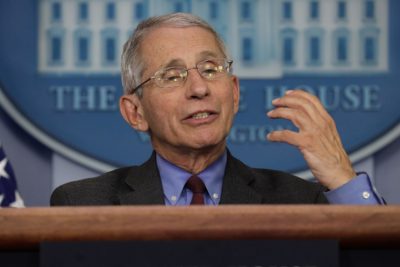Thursday, June 26 was a high watermark for U.S. cases of the coronavirus known as COVID-19. There were more than 41,000 new cases of COVID-19 yesterday; our highest single-day new COVID-19 case number to date. Colorado COVID-19 cases counts have continued to remain relatively low and stable, relative to the states surrounding us. The question becomes, “For how long?”
As all 50 states have reopened to some extent from their spring shutdowns, the situation across these states is not equal. Already, some 33 states are now experiencing rising COVID-19 case numbers.
In states such as Arizona, Texas, and Florida cases of COVID-19 are surging, already nearly overwhelming Intensive Care Units (ICU), where many of the major metropolitan cities report that every ICU bed is full. Across much of the south and west, cases in other states are rising.
Colorado is ringed by states where cases of the virus are rising — some dramatically. These also happen to be states whose residents like to vacation in Colorado. While Colorado residents have been successful in reducing community spread, no one knows what might happen as the summer tourist season proceeds.
This morning Texas Governor Greg Abbott (R) didn’t just put the state’s reopening on hold, he rolled it back, announcing that bars would be closed immediately. As he did so he presented the statistic that the Texas Department of Public Health now estimates that one in every ten Texans has the virus.
Many states rushed to reopen in time for the Memorial Day weekend, placing few if any restrictions on reopening. Those who rushed, appear to be among the states with the fastest-rising cases. States like Colorado have taken their time, slowly phasing reopening, and relying heavily on their Department of Public Health professionals to establish strict reopening guidelines. Colorado is now poised to enter the next phase of reopening, called “Protect Our Neighbors.”
“Don’t be fooled, this is a monster,” said one New York City doctor, talking about the impact of the virus in his city. “The people who say it isn’t real, well, how do they account for the dead?”
The Centers for Disease Control (CDC) says that for every person diagnosed with COVID-19, there are likely 10 more with the virus but undiagnosed. Given the numbers around the globe, this isn’t encouraging. The world now has more than 9.8 million known, diagnosed cases, what more than 489,000 dead from the virus. The U.S. now has more than 2.5 million cases, with close to 130,000 dead. Predictions are that deaths from COVID-19 will top 200,000 by early fall.
“COVID-19 isn’t gone, it isn’t even sleeping,” said Director of the National Institute of Allergy and Infectious Diseases Dr. Anthony Fauci, who serves on the White House COVID-19 Task Force. during a recent appearance on MSNBC. “Until there is a vaccine, what we have is social distancing and facemasks. These seem simple, but they are the most effective tools we’ve got right now.”
After a two-month hiatus, the White House COVID-19 Task Force held a rare public press briefing on Friday, June 26, away from the White House, at the Department of Health and Human Services headquarters.
President Donald Trump was not present.
“No American who has required a ventilator has ever been denied a ventilator in the United States,” said Vice President Pence during the briefing. He referenced that “the country has been working hard on its ’45 days to slow the spread’ effort. But we want to open the U.S. economy up even as we want to save lives.”
Since his “Jump the shark” moment two months ago when during the COVID-19 task force he suggested that the way to cure yourself of COVID-19 was to inject cleaning fluids into the body, President Trump has retired from appearing at these briefings.
Trump has tried to deflect the rising COVID-19 case counts, holding rallies in both Tulsa, Oklahoma and Phoenix, Arizona. Thousands of his followers gathered, few if any facemasks evident, and social distancing non-existent. Both states have rising COVID-19 caseloads.








As an encouraging anecdote, I spoke to an F St. business owner this weekend who stated that they were actively limiting the number of people in their store. Given the close nit nature of our community, I am optimistic that most businesses will balance public health and profit motive. There will always be exceptions to be sure, but I have faith in our community.
Thanks to Chaffee County Health for their efforts during this time.I was wondering if they issued an order of mandatory mask and distance who enforces the order? Does law enforcement decide what they will enforce?I am hoping that as the surges come,some entity will.It can not be left up to business owners,whose bottom line depends on numbers.The County is getting visited by tourists from Texas,Florida and Arizona,all surge states. A hard choice,protect the local population,or the businesses. Aspen seems to be enforcing masks and distance, can Salida?
Chaffee County has done an admirable job of controlling the spread of the COVID-19 virus. The initial Chaffee County Public Health Order included a facemask order and social distancing, mirroring the state of Colorado Public Health Order. While county and municipal leaders endorsed it and wear facemasks, the Salida Police Dept., Chief of Police Russ Johnson, saying he was speaking on behalf of the Chaffee County Sheriff, declared that they didn’t have the manpower to enforce it.
The state of Colorado strengthened its order, allowing businesses to refuse services to those who enter businesses posted as requiring facemasks, without them.